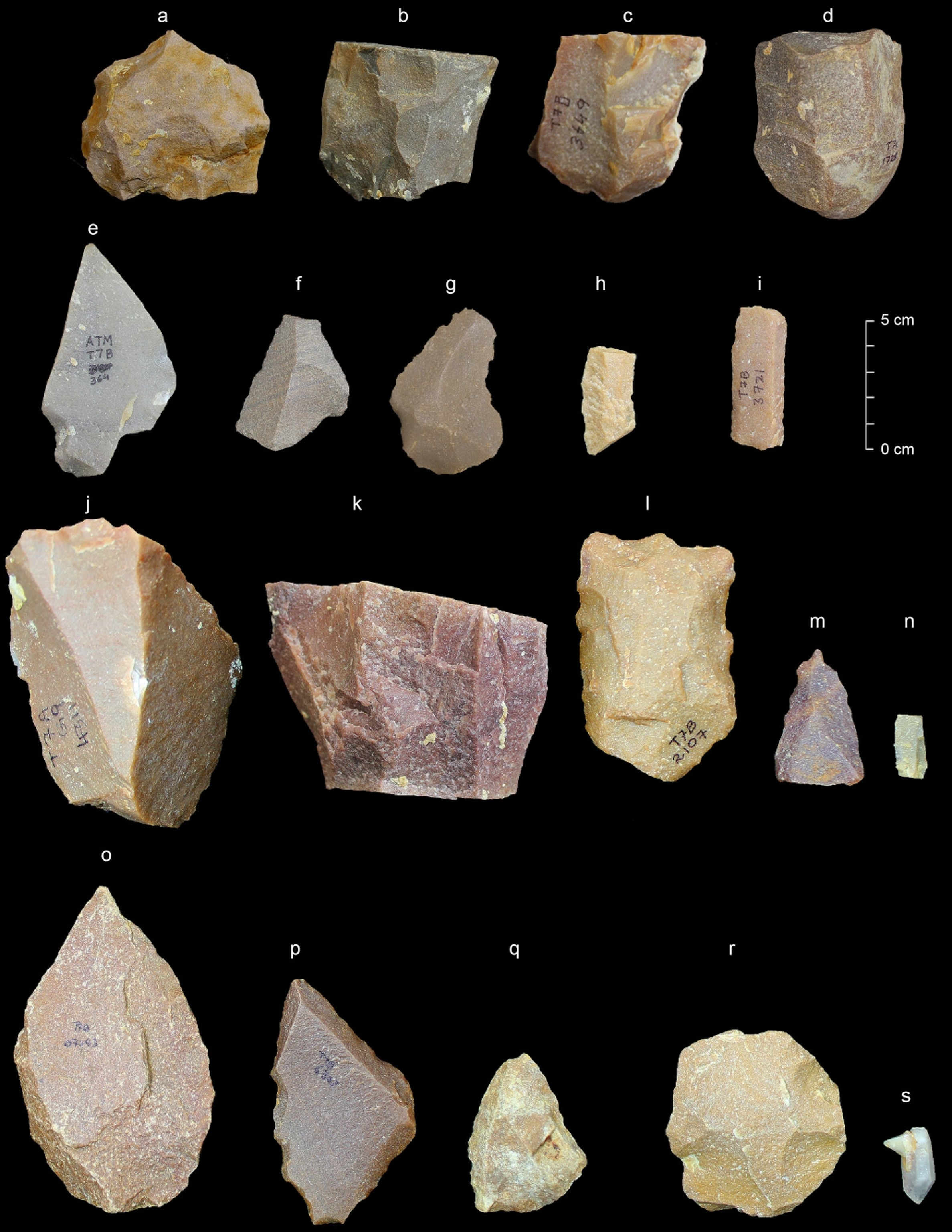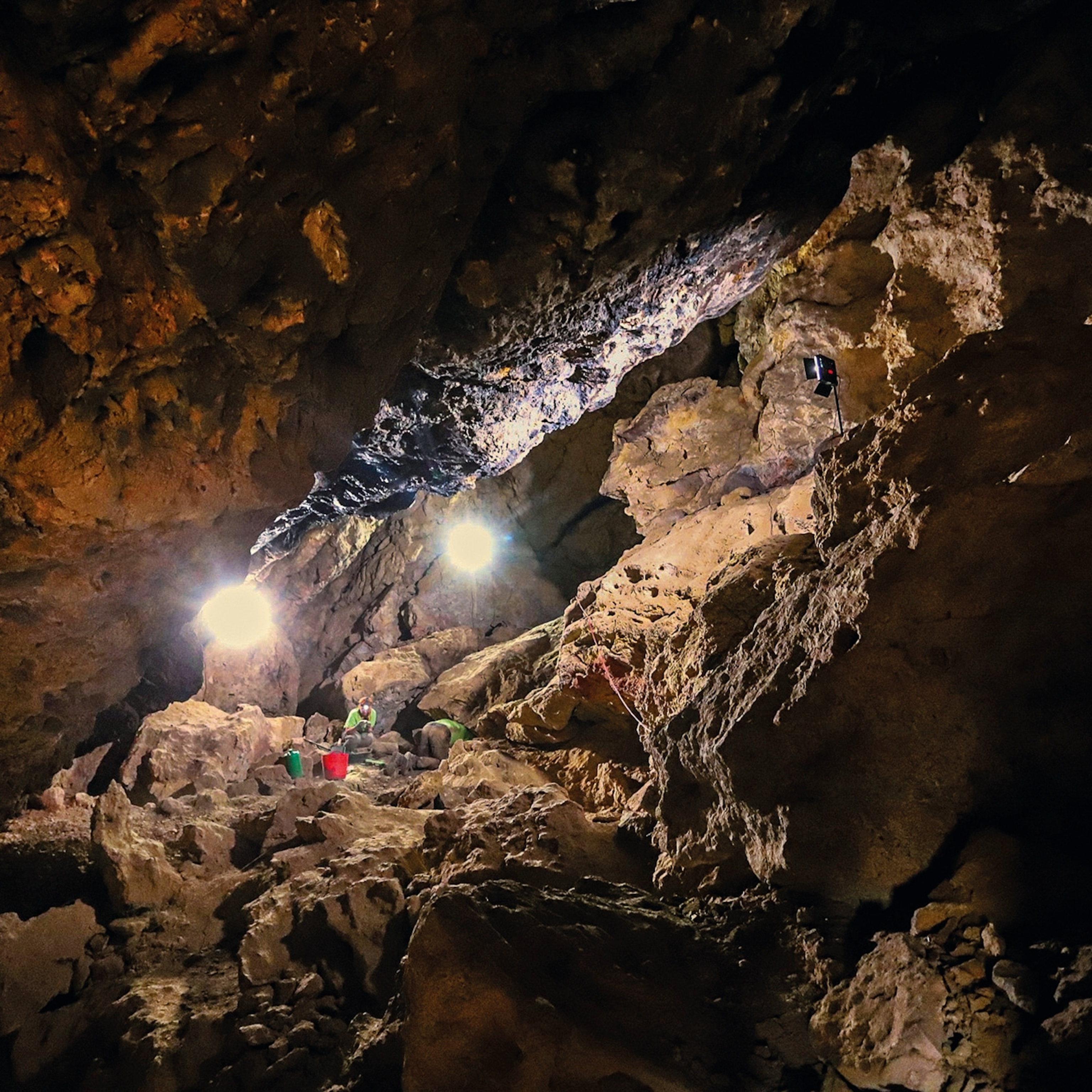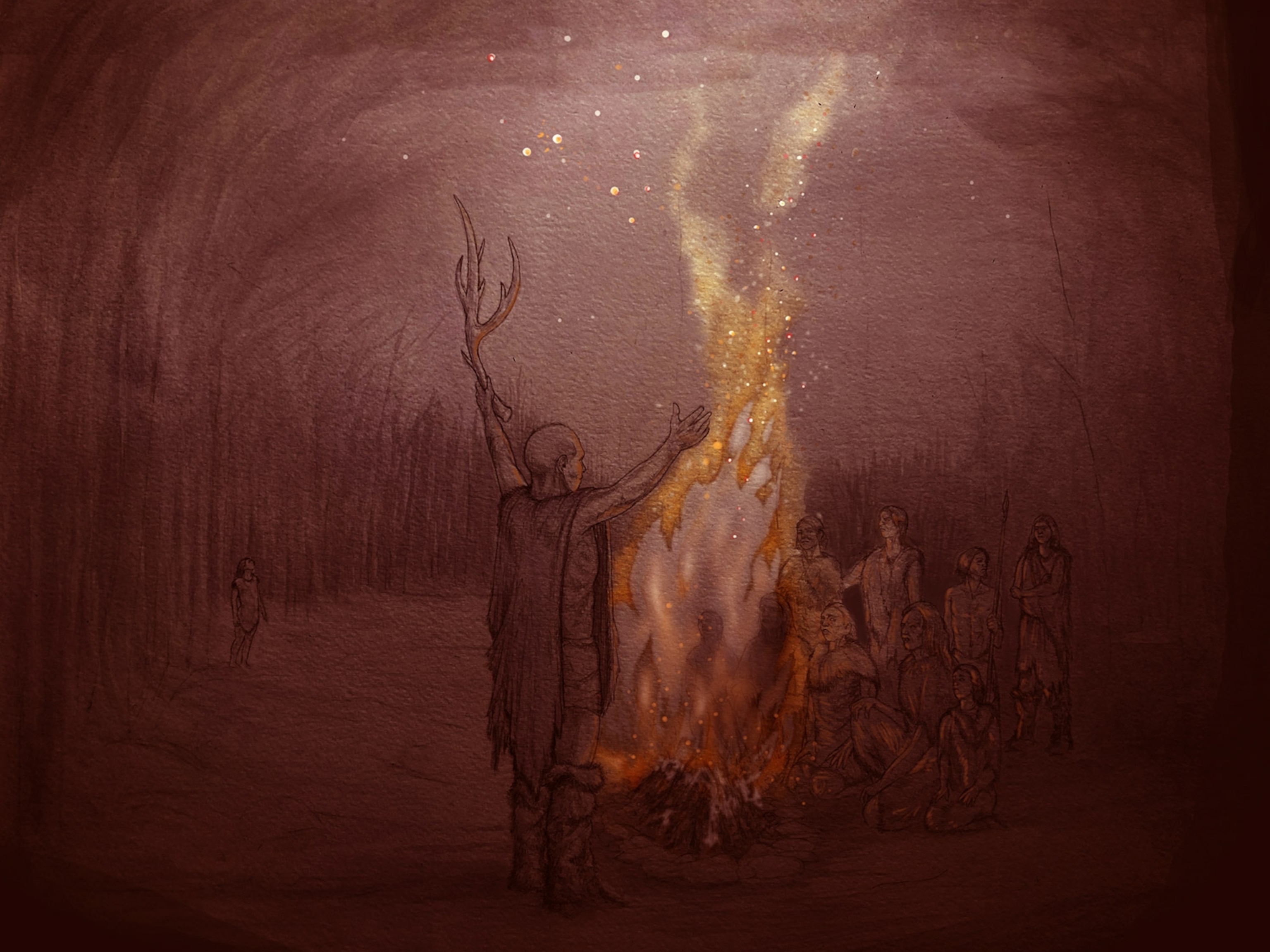
These Tools Upend Our View of Stone-Age Humans in Asia
The discovery in India supports the idea that multiple waves of ancient humans left Africa well before 60,000 years ago.
Long ago in what’s now southern India, early humans showed a knack for disruption that would’ve made Silicon Valley tech wizards envious. Over time, the ancient innovators rejected bulky hand-axes and cleavers, instead opting for sleek flakes of stone meant for cutting and tipping spears.
Similar disruptions occurred in Africa among the forebears of modern humans around the same time. But the timing of the Indian transition, spotted in the soil layers of a site called Attirampakkam, is eye-popping. At 250,000 years old—and possibly up to 385,000 years old—this tool transition occurred far earlier than it did at other sites in India.
The discovery, described in Nature on Wednesday, pushes back the start of what’s called the Middle Paleolithic culture in the region by more than a hundred thousand years. That, in turn, could reshape how scientists view the global spread of hominins—humans and their ancient relatives—before modern humans migrated out of Africa some 60,000 years ago.

“This clearly shows that populations with this culture were present in most parts of South Asia, adapting to local factors and with tool types evolving and changing through time,” says Shanti Pappu of the Sharma Centre for Heritage Education in India, who led the most recent excavations at Attirampakkam.
The find also deepens scientists’ view of how ancient hominins lived in South Asia, a region where the fossil record remains poorly understood.
“It’s a marvelous piece of work,” says Max Planck Institute paleoanthropologist Michael Petraglia, who reviewed the study before publication.
Our Tangled Family Tree
Genetic evidence shows that more than 90 percent of humans today descend from a small population of Homo sapiens that left Africa between 60,000 and 125,000 years ago. From there, they rapidly fanned out, reaching the tip of South America by 18,000 years ago.
Some researchers suspected that this wave of Homo sapiens expanded so rapidly because they were armed with advanced stone tools superior to those of the earlier Acheulian culture, which is defined by bulky stone hand-axes and cleavers.
To test this idea, archaeologists have tried to find and date stone tools around the world, to see when the tool transition occurred in different regions. Previous studies found that Middle Paleolithic tools didn’t enter India before 140,000 years ago.
Recent research, however, is building the case that multiple waves of humans left Africa before the migration inscribed in our collective DNA. Just last week, research published in Science suggested that modern humans ventured into what’s now Israel as early as 180,000 years ago, earlier than previously thought.
To complicate matters, India’s ancient humans are understudied. Few of the region’s hominin sites have been well dated, and across the entire subcontinent, only two ancient hominin fossils have ever been found, one of which is undated.
In this context, Attirampakkam is an Indian national treasure. First explored for scientific purposes by British geologist R.B. Foote in 1863, it’s one of the subcontinent’s few thoroughly excavated archaeological sites dated to more than a hundred thousand years old.
A Site for Sore Eyes
For more than 20 years, Pappu’s team has worked at Attirampakkam to unravel its secrets, digging through 30 feet of sediment an inch at a time.
It hasn’t been easy; they’ve had to cope with summer heat, cobras, and a shoestring budget. But in 2011, their efforts massively paid off, when they announced the discovery of Acheulian tools at Attirampakkam that are more than a million years old, far older than other similar sites in India.
The site continued to offer surprises. To Pappu’s delight, her colleagues also found artifacts in the sediments above the Acheulian layers. But unlike those bulkier tools, some of the younger tools were slimmer flakes of stone that could have tipped spears, a calling card for the Middle Paleolithic.

To date these tools, Pappu’s team turned to tiny charged particles. Natural radiation injects soil minerals with extra electrons, which get trapped in the minerals. Heat and light can free these electrons, so finding an overload of them in the sediments alongside stone tools suggests the tools have not seen sunlight for ages.
“If the artifacts were created and used briefly before being abandoned, and buried immediately and without any further reworking, the [sediment-derived] age should be equal to the age of the artifacts,” says Bo Li, a scientist at the University of Wollongong and an outside authority on this dating method.
In all likelihood, Attirampakkam’s oldest Middle Paleolithic layer—and its stone tool contents—are at least 250,000 years old, the team reports.
Remaining Mysteries
Pappu and her colleagues say that the speed of Attirampakkam’s tool transition was drastic. Such a sudden transition, they argue, could have come from a human migratory pulse well before 60,000 years ago, a pulse that might have brought the Middle Paleolithic culture out of Africa and into India.
“We used to think that modern humans spread from Africa because they had some enormous technical advantage that let them replace ‘stupid’ archaic humans; we now know this is false,” says University of Wisconsin-Madison paleoanthropologist John Hawks, who wasn’t involved with the study.
But many questions remain. For one, Pappu stresses that the identity of the tools’ creators is still unknown. And Petraglia, who reviewed the study, cautions that while the tools at Attirampakkam may resemble Middle Paleolithic tools found elsewhere, that doesn’t necessarily exclude the possibility that different peoples converged on similar solutions to common problems.
“I don’t think this is necessarily an out-of-Africa event,” he says. “Rather than equating technologies from Europe to Africa to South Asia, you can also recast it as independent invention by large-brained early humans.”
More work will be needed to distinguish between these scenarios, but India’s fossil sites surely contain additional clues, Pappu says: “There are very few excavated or dated Acheulian and Middle Palaeolithic sites in India. As the number of research projects increases, I am pretty confident that new surprises will arise.”







